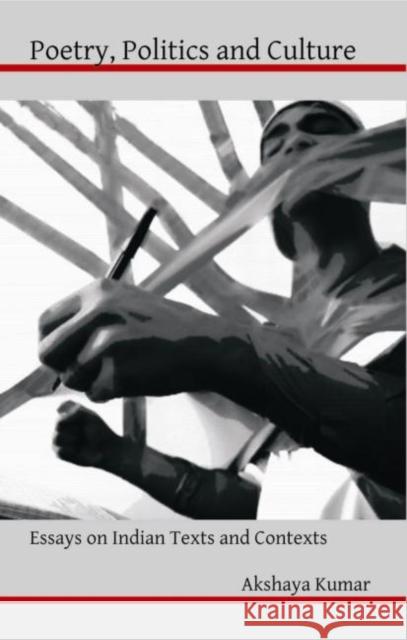Poetry, Politics and Culture: Essays on Indian Texts and Contexts » książka
Poetry, Politics and Culture: Essays on Indian Texts and Contexts
ISBN-13: 9780415480055 / Angielski / Twarda / 2009 / 412 str.
Poetry, Politics and Culture: Essays on Indian Texts and Contexts
ISBN-13: 9780415480055 / Angielski / Twarda / 2009 / 412 str.
(netto: 625,86 VAT: 5%)
Najniższa cena z 30 dni: 651,77
ok. 22 dni roboczych.
Darmowa dostawa!
This book maps the journey of the Indian poetic imagination--in Hindi, Panjabi and Indian English--from its original quasi-spiritual longings to its activist interventions in the public domain. As Indian poetry of the post-1990s gravitates towards a non-Orientalised postcolonial nationalism, it seeks to rewrite and disseminate the shifting coordinates of nationalist imagination in terms of the dissent of the subaltern discontents of the nation. The book is interdisciplinary: it studies Indian poetry from the new emerging imperatives of postcolonialism, new historiography (subaltern, dalit and diasporas), nationalism, and cultural studies. Covering the two major north Indian languages--Hindi and Punjabi--along with poetry in Indian English, the book is a close textual study of about 150 poetry collections in these languages. It is path-breaking in its study of secular poetry written in the so-called vernaculars, with critical attention to its participation in the political as well as cultural processes of nation-making. This cutting-edge book should be of interest to scholars of Indian writings in English, Hindi and Panjabi, gender studies, dalit and diaspora studies, postcolonial poetry and to students reading South Asian literature and culture.
This book maps the journey of the Indian poetic imagination—in Hindi, Punjabi and Indian English—from its original quasi-spiritual longings to its activist interventions in the public domain. As Indian poetry of the post-1990s gravitates towards a non-Orientalised postcolonial nationalism, it seeks to re-write and disseminate the shifting coordinates of nationalist imagination in terms of the dissent of the subaltern discontents of the nation.
The book is interdisciplinary: it studies Indian poetry from the new emerging imperatives of postcolonialism, new historiography, subaltern dalit and diasporas) nationalism, and cultural studies. Covering the two major north Indian languages—Hindi and Punjabi—along with poetry in Indian English, the book is a close textual study of about 150 poetry collections in these languages. It is path-breaking in its study of secular poetry written in the so-called vernaculars, with critical attention to its participation in the political as well as cultural processes of nation-making.
This cutting edge book should be of interest to scholars of Indian writings in English, Hindi and Punjabi, gender studies, dalit and diaspora studies, postcolonial poetry and to students reading South Asian literature and culture.
This cutting edge book should be of interest to scholars of Indian writings in English, Hindi and Punjabi, gender studies, dalit and Diaspora studies, postcolonial poetry and to students reading South Asian literature and culture.











